Flexible Image modelling for deblending and strong gravitational lensing

Rémy Joseph
Stockholm, Oct. 15 2021
Collaborators: Peter Melchior, Fred Moolekamp, Frederic Courbin (EPFL, SW), Jean-Luc Starck (CEA, FR), Aymeric Galan (EPFL), Austin Peel, Martin Millon (EPFL), François Lanusse (CNRS, FR), Jiaxuan Li (PKU), Jenny Greene, Johnny Greco (OSU).

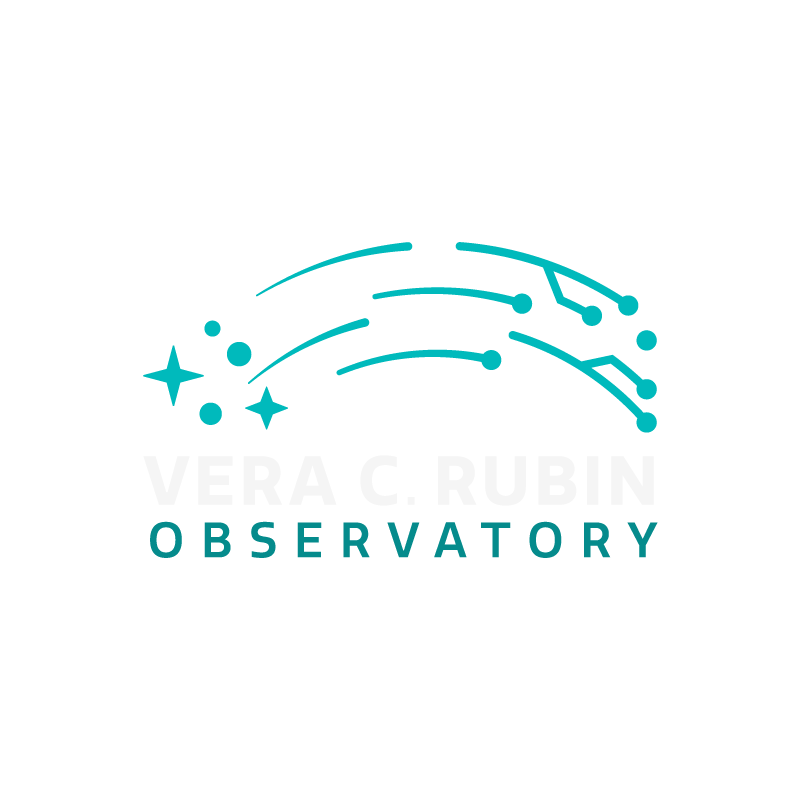
Blending and Strong gravitational lensing
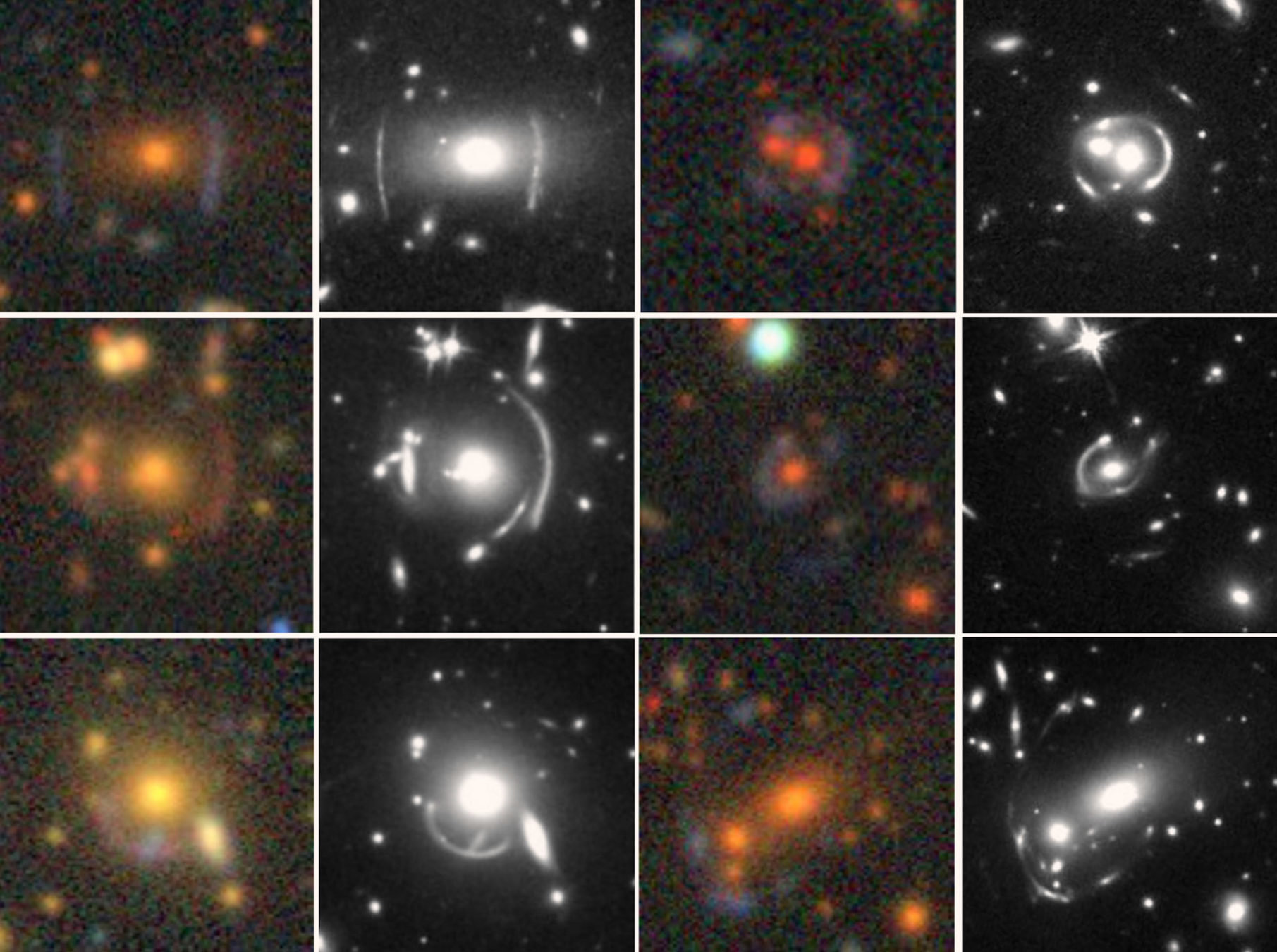
DECaLS and HST
Image credit: Dark Energy Camera Legacy Survey / NASA / ESA / Hubble / Huang et al.
The problem of blending
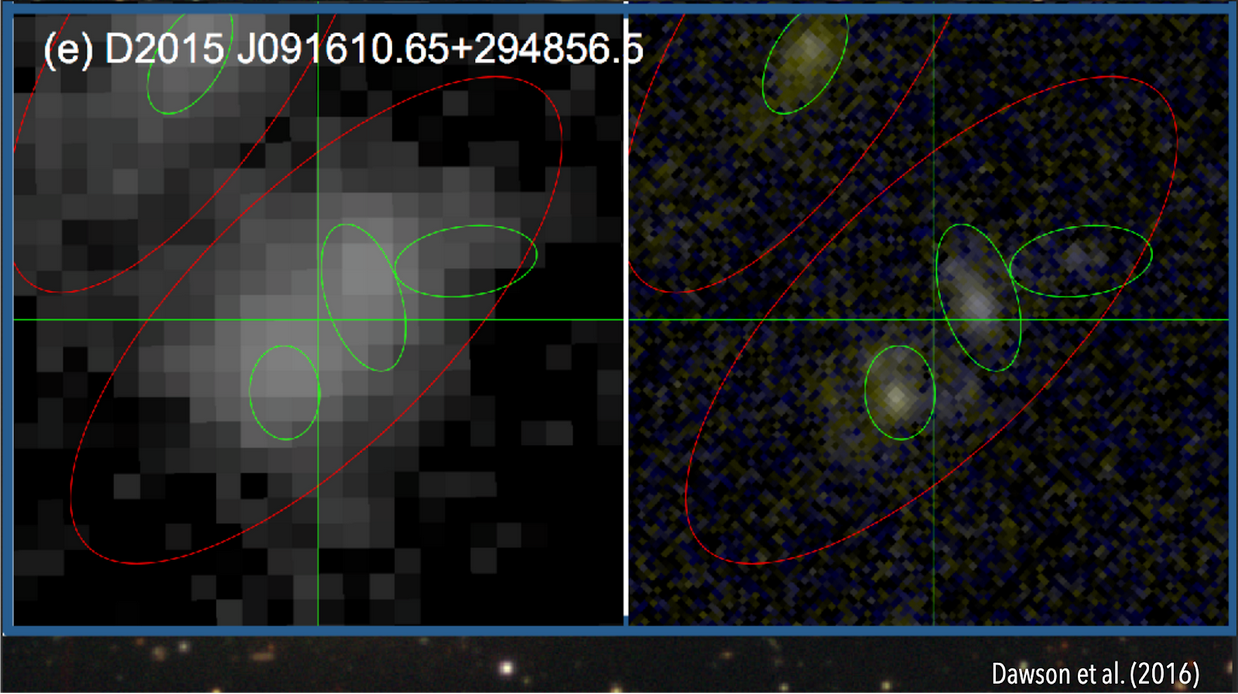
- Blending: The apparent ovelap of objects on the plane of the sky
- Expected blending in Rubin: 63% of galaxies
Euclid: 43%
Sanchez et al. (in prep)
- Affects galaxy shapes, counts and photometric redshift measurements
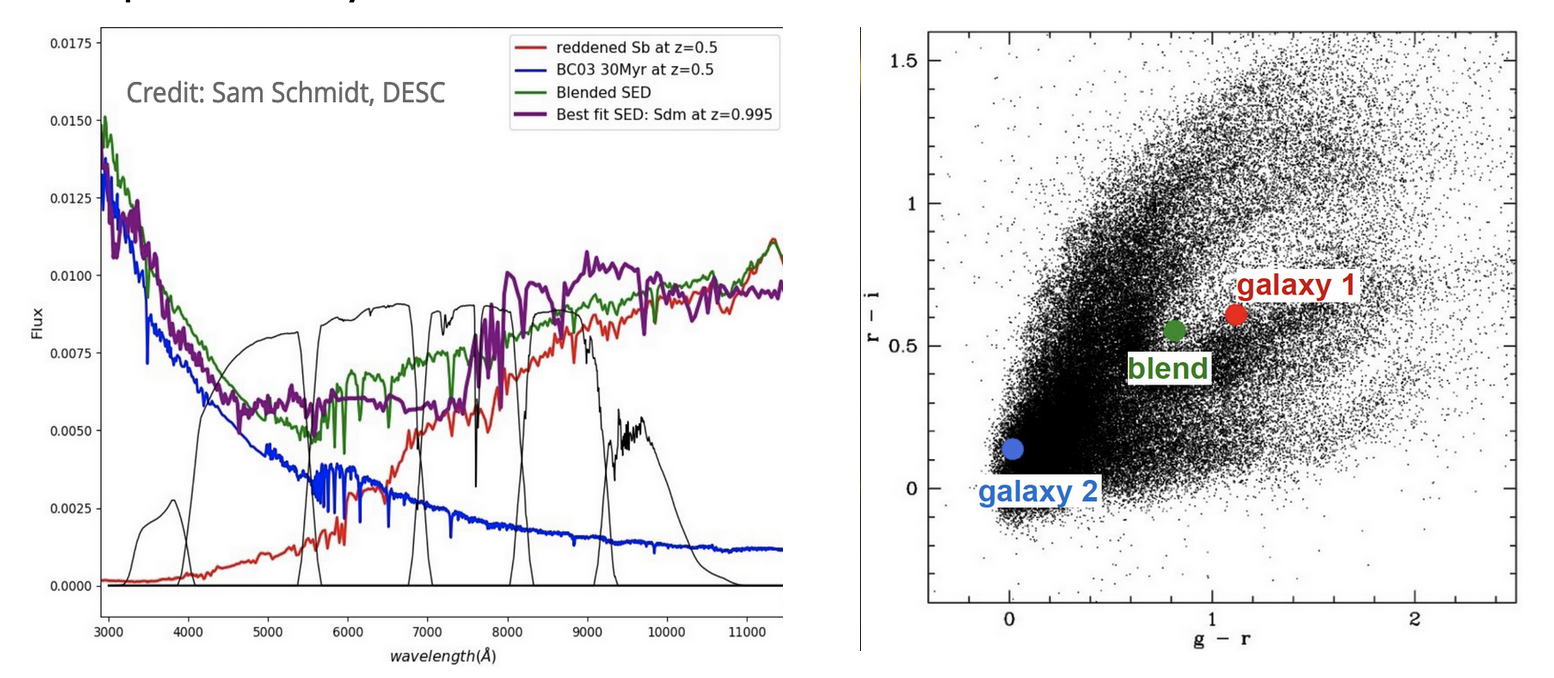
In practice
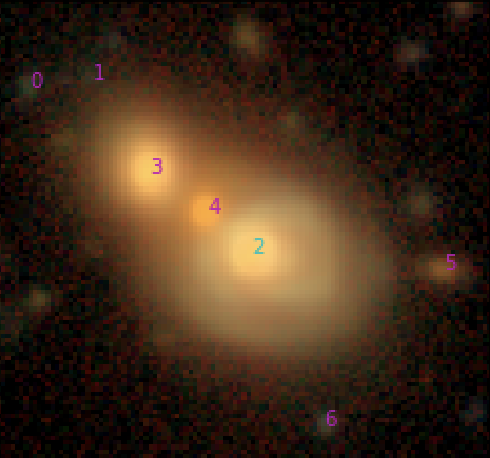
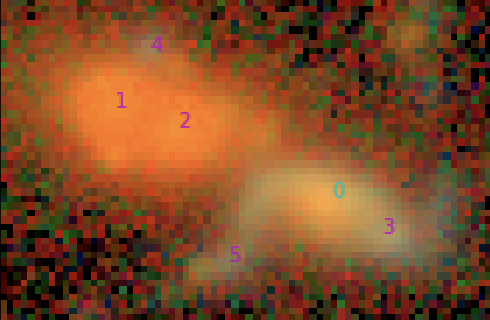
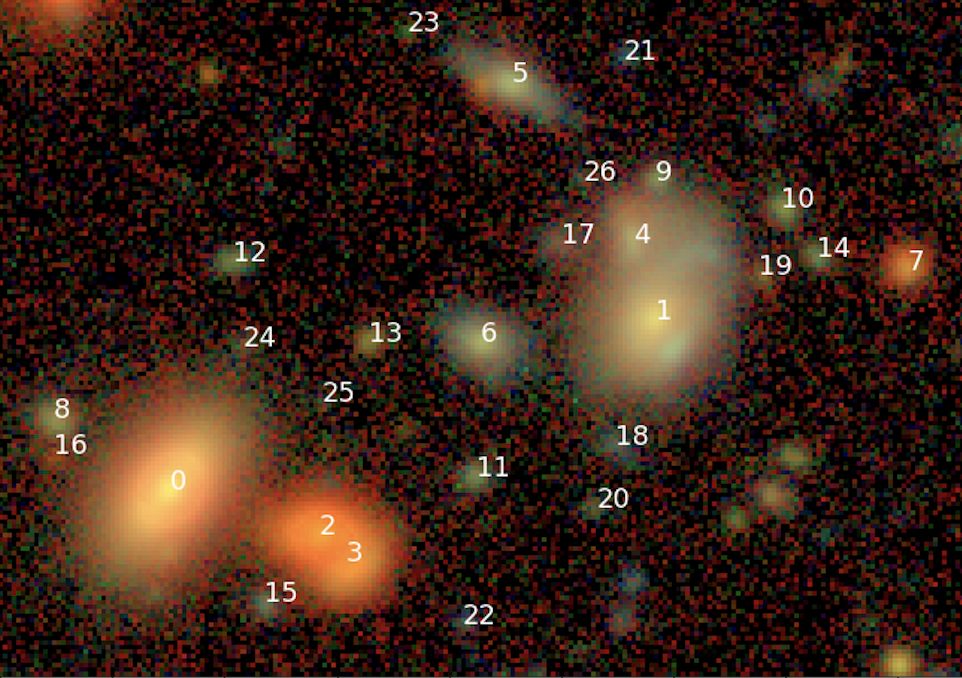
MuSCADeT/SCARLET
- Colour-based: each band is a linear combination of monochromatic components
F435w: \(I_2\)
F606w: \(I_1\)
F814w: \(I_0\)
$$I_j = H_j \sum_i a_{j,i}m_i + N_j$$
$$m_0$$
$$m_1$$
$$I$$
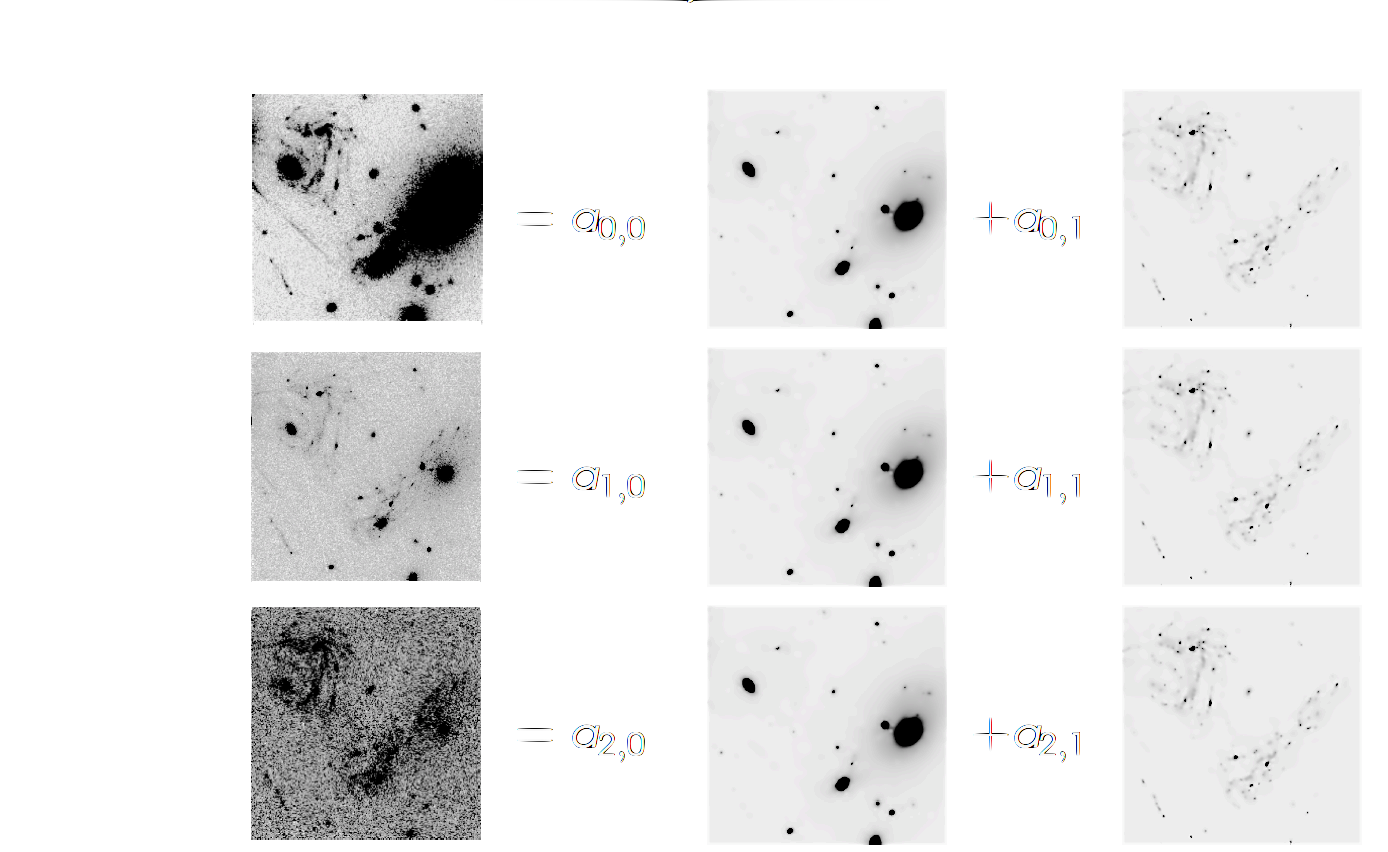

SCARLET
Melchior et al. 2016 ( arXiv:1802.10157)

Linear Optimisation
Constraints: Positivity, Monotonicity, Bounding.
Functional decompositions:
The Starlet transfrom
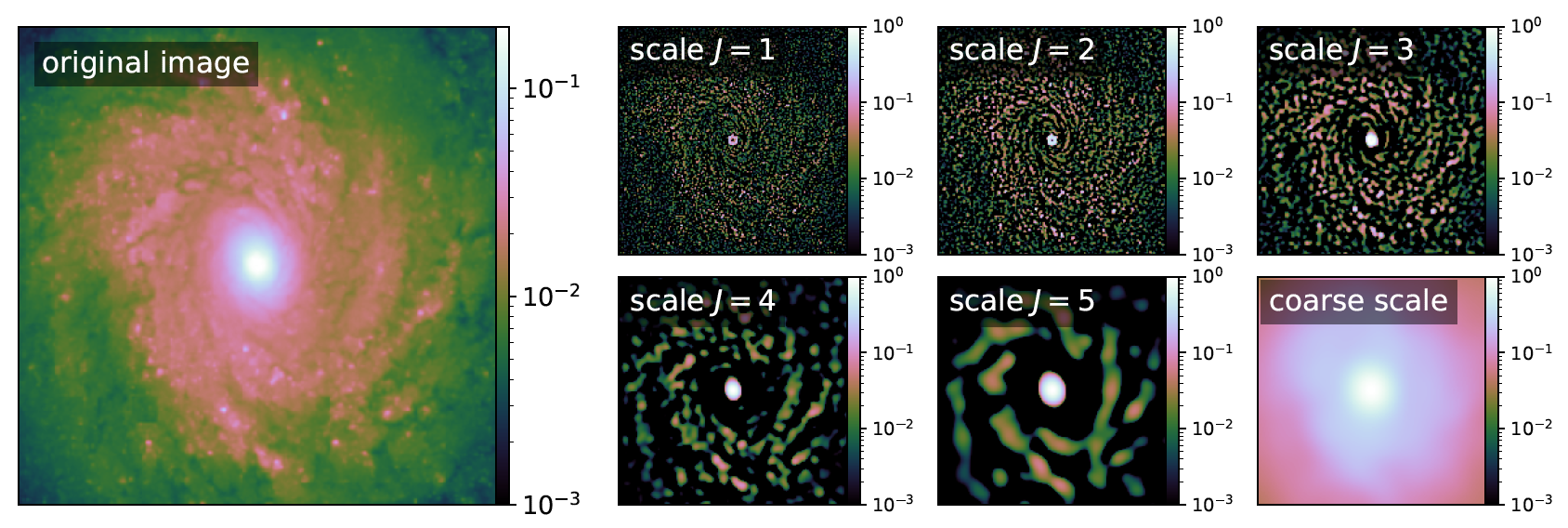
Starlet coefficients
- Multiscale transformation
- Decomposition in B-splines at different spatial scales
Starlet basis set
Low Surface Brightness Galaxies
On going work with Jiaxuan Li, Johnny Greco & Jenny Greene
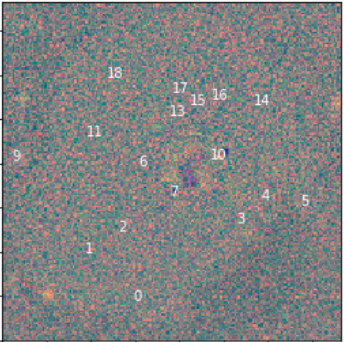


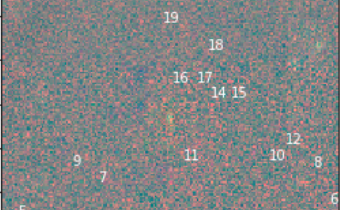
HSC image
image-model
LSB model
Residuals
Reconstruction of strongly lensed source
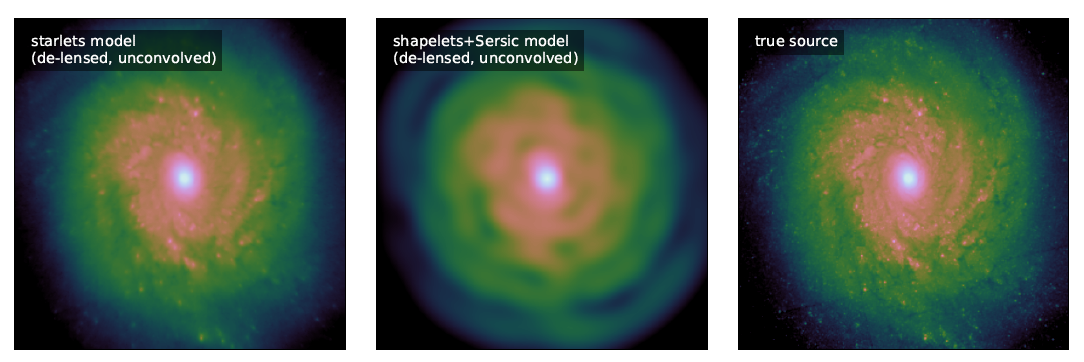
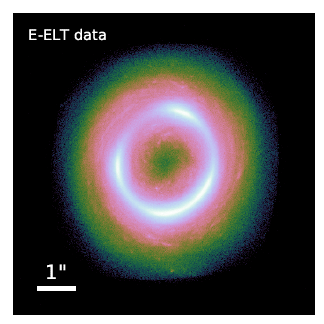
Future/Current projects:
Flexible models for mass substructure reconstruction



Reconstruction: known model for the mass
Reconstruction : wrong mass model (unknown substructure)
Strong gravitational lens searches
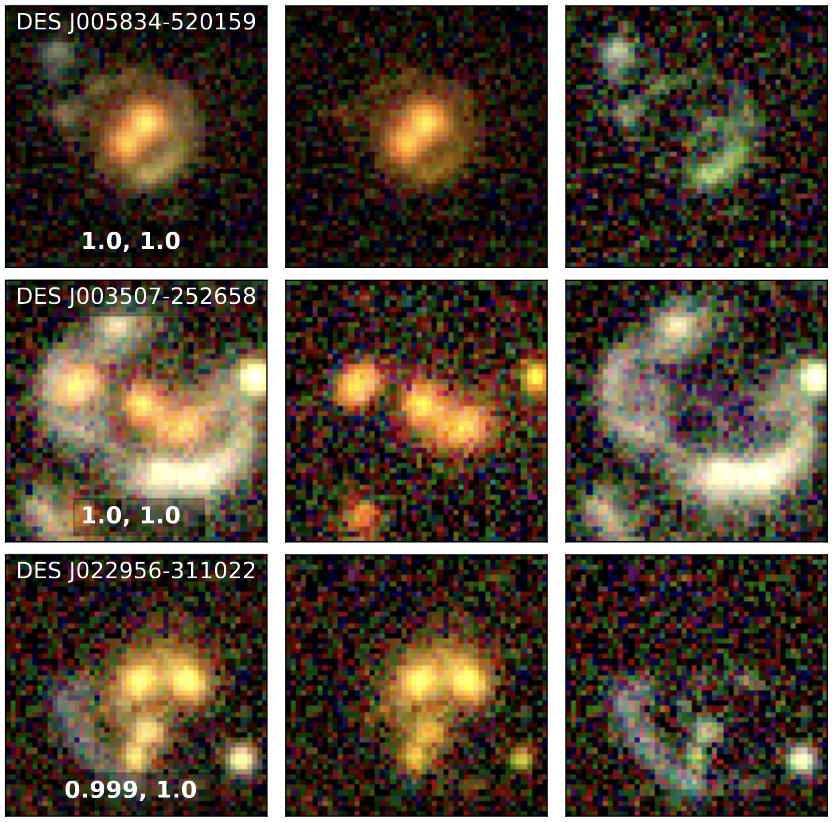
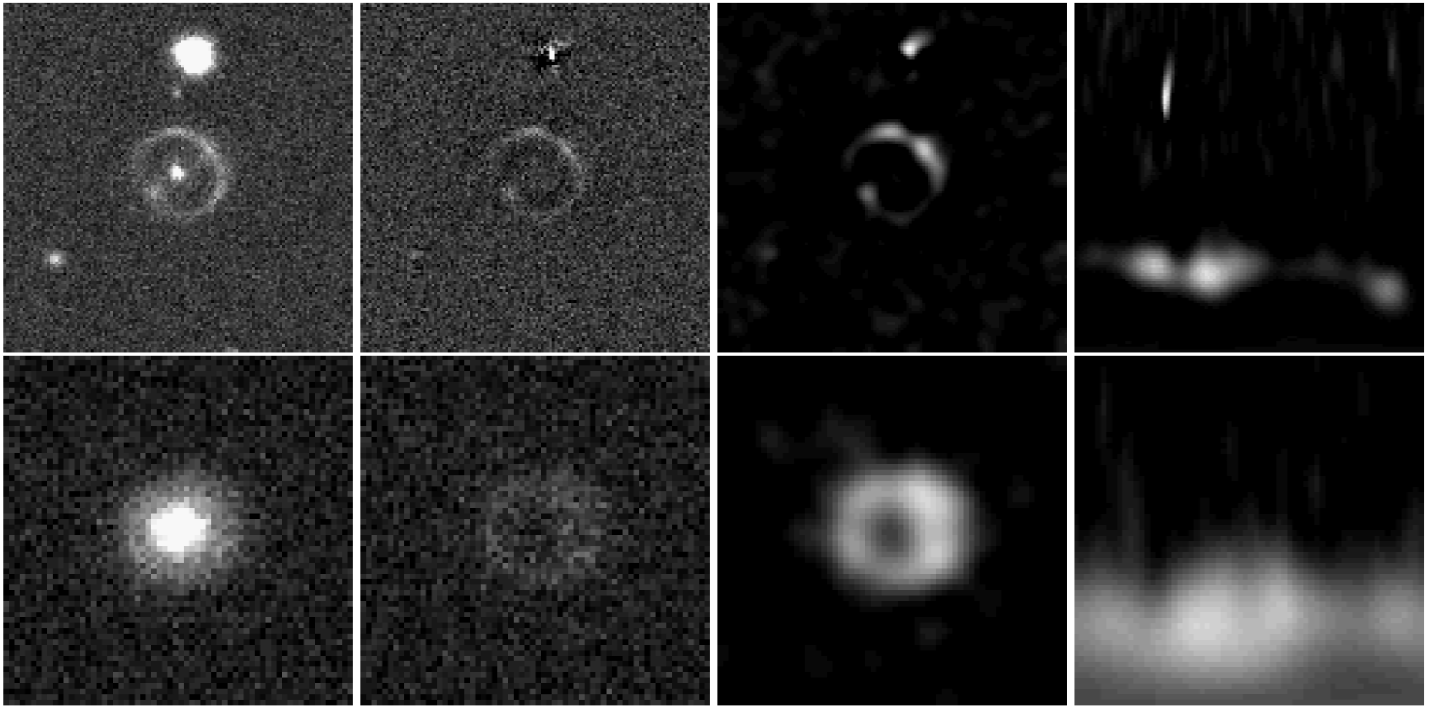
Automated searches rely heavily on ML to find strong lens candidates.
- ML finders are only as good as their training. e.g. Rojas et al. injects strongly lensed features in DES images to build a training set.
- ML finders identify ~1000s of candidates.
- Deblending for lens finding to help the finders (humans or not)
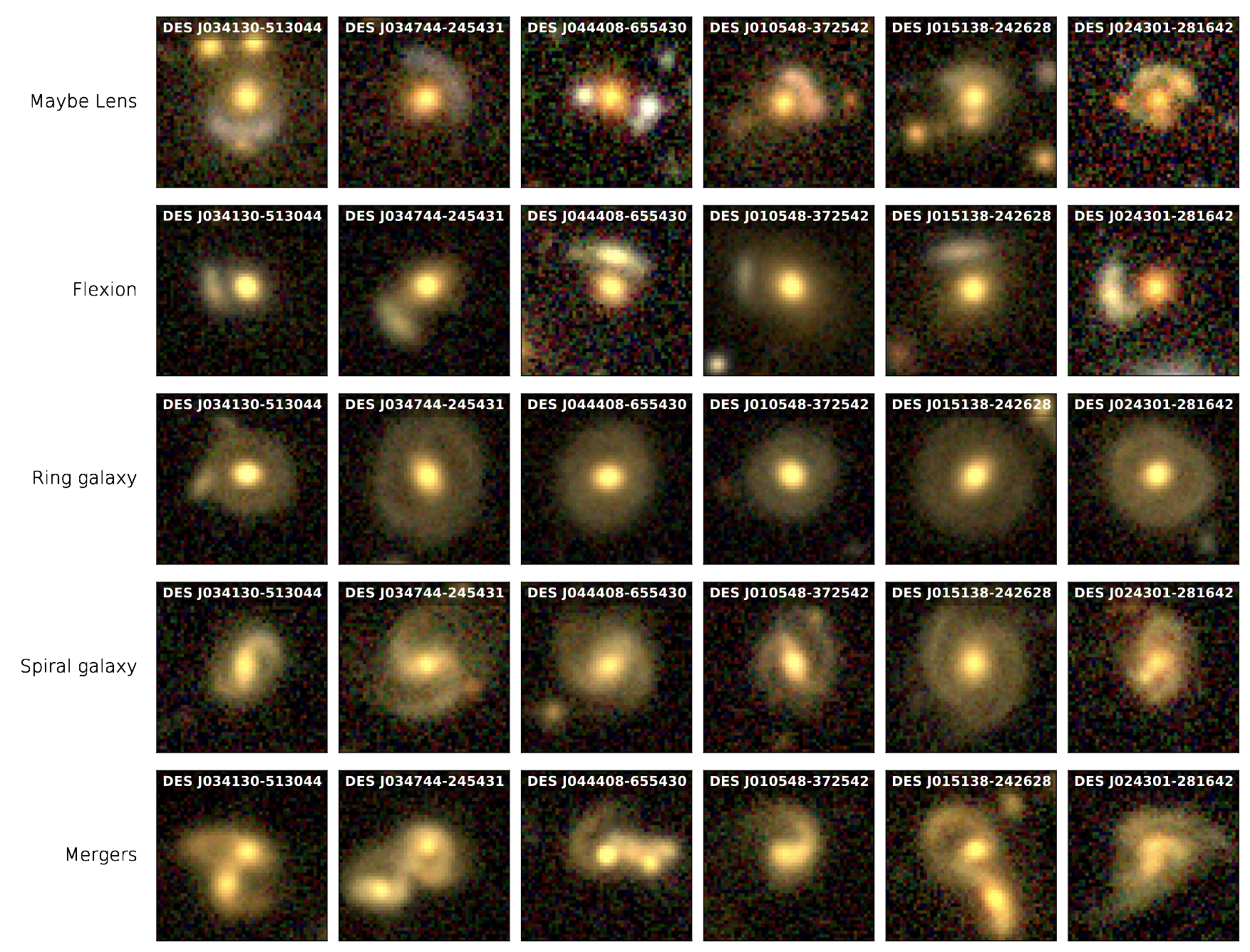
Future/Current projects:
Multi-resolution deblending

Pixel-level joint processing takes the best of both worlds:
- Higher resolution
- Deeper images
- Multiple bands
Expectations:
- Better deblending,
- improved shape measurement
- Better photometric redshifts
- Better detections
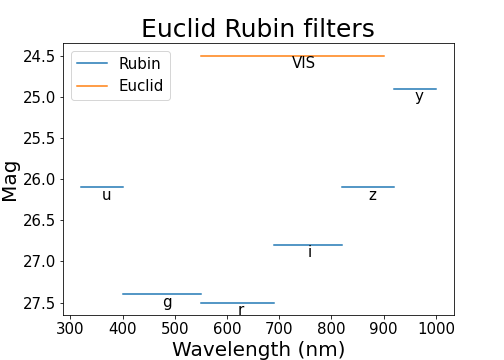
Future/Current projects:
Multi-resolution deblending
pixels
wavelength
pixels
pixels
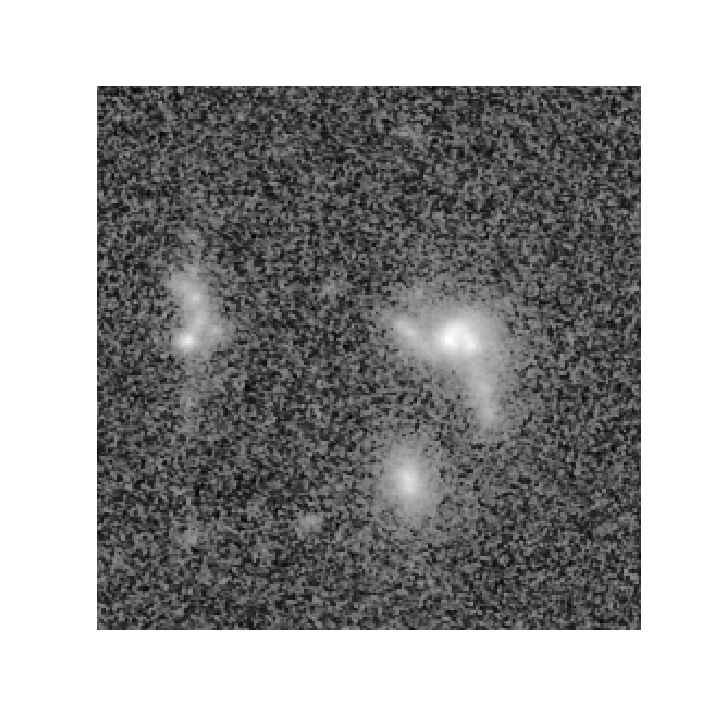
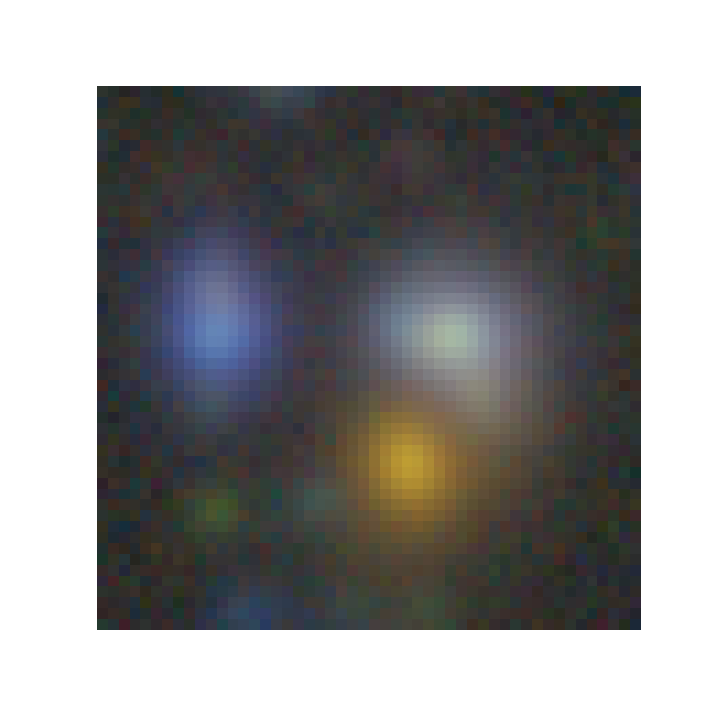
HST cosmos, F814w
HSC DR2, grizy
\(Y_1\):
\(Y_2\):
pixels
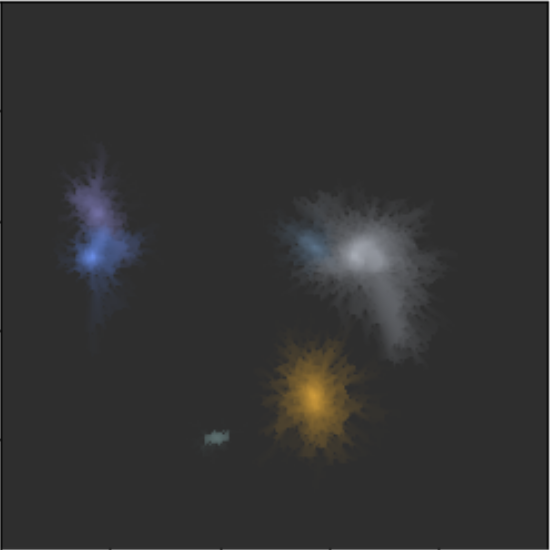
Joint reconstruction
How to achieve these goals:
Better models and better constraints
Lensing :
- free-form modelling to enable substructure detection
- Flexible models allow the exploration of the MST and avoid cutting it arbitrarily
- Constraint on magnification from lensed transients (supernovae, caustic crossings)
- Incorporating high cadence monitoring with Rubin
Multi-resolution deblending:
- Making of all the information available (spectra, morphology)
- Better models for high resolution imaging
- Characterization of deblending responses
Multi-resolution lensing:
Joint inference from images at different resolutions
How to achieve these goals:
Better models and better constraints
Tools from machine learning
- Recurrent Inference Machine as a prox on lens models.
- Pixel CNN as a prior and a differenciable prox (ongoing work with F. Lanusse).
- (Autoencoders provide a space to sample from)
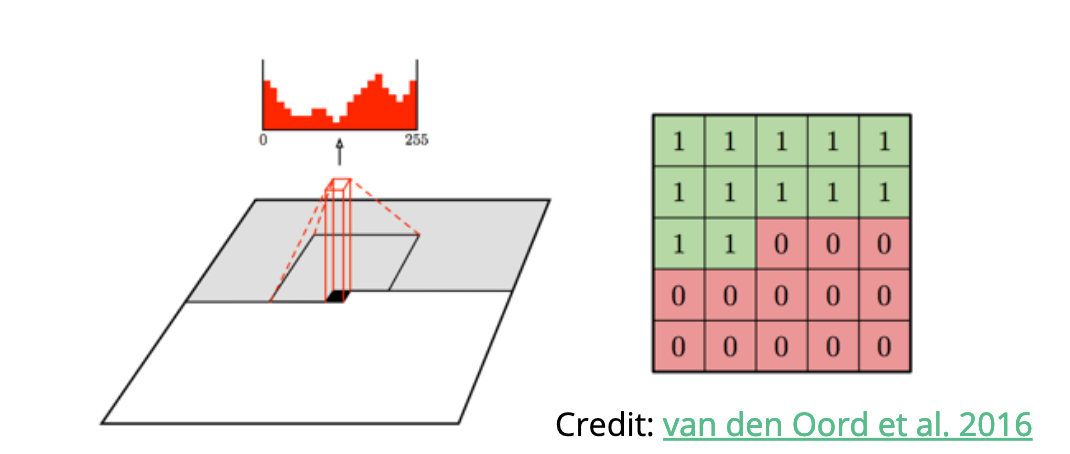
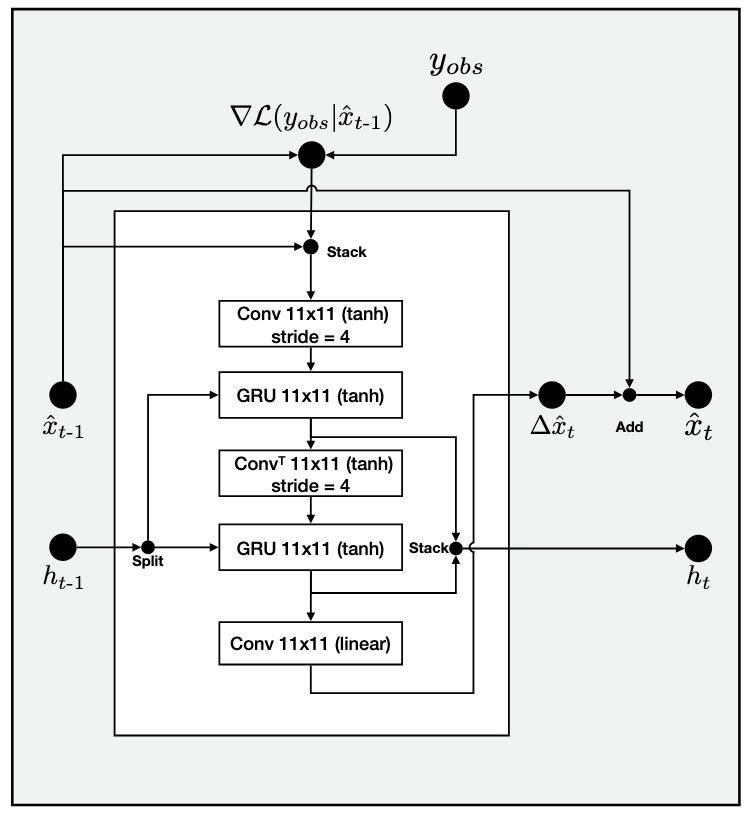
Credit: Morningstar et al. 2019
To conclude
- I like hard problems:
- Deblending across resolution
- Free-form lens modelling
-
Modelling images:
- Understanding the formation of images
- Great data require great models (flexibility & scalability)
- Flexible models need flexible priors
- What keeps me up at night:
- Scalability and reliability
- How to estimate uncertainties
Modelling astro images for
Deblending

Galaxy light profile
Telescope refraction (convolution)
Instrument acquisition (pixelation)
Instrumental noise
Constraints on starlet coefficients
Is achieved by reconstructing sparse fields in starlets:
\( \tilde{S} = \underset{S}{argmin}\) \( \frac{1}{2}||I-HA\Phi S||^2_2 \) \(+\) \(\lambda||S||_1\) \(+\) \(\mathcal{i}_+(\Phi S) \)
Likelihood Sparsity Positivity
(smoothness constraint)
MuSCADeT: Joseph et al. 2016 (arxiv:1603.00473)
$$I_j = R*P_j * \sum_i a_{j,i}\Phi s_i + N_j, \qquad m_i = \Phi s_i$$
MuSCADeT
The algorithm
- Estimate the mixing matrix A (default)
Colours are extracted from the scene using Principal Component Analysis (PCA) of the multi-band pixels
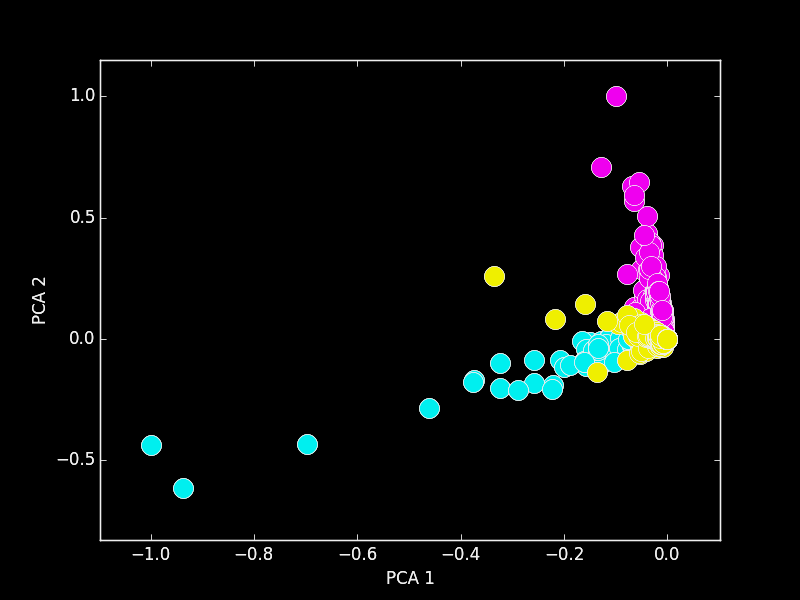
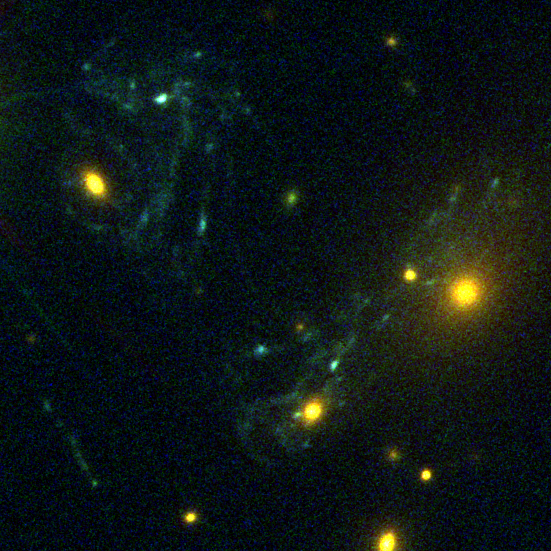
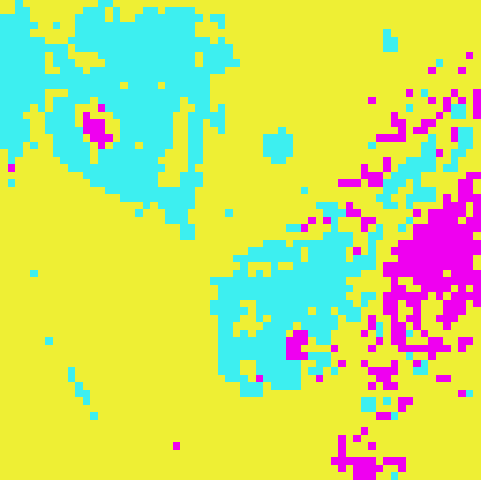
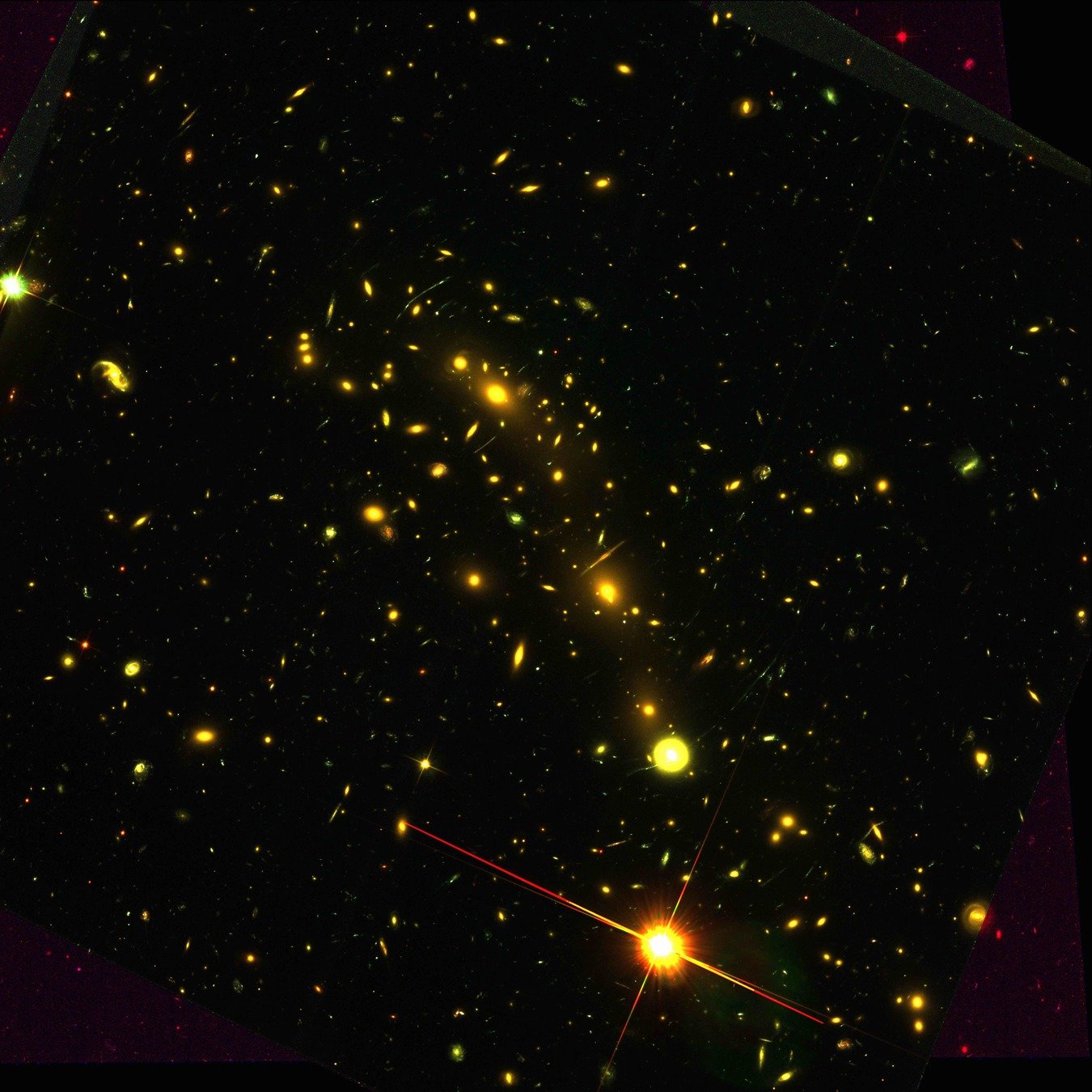
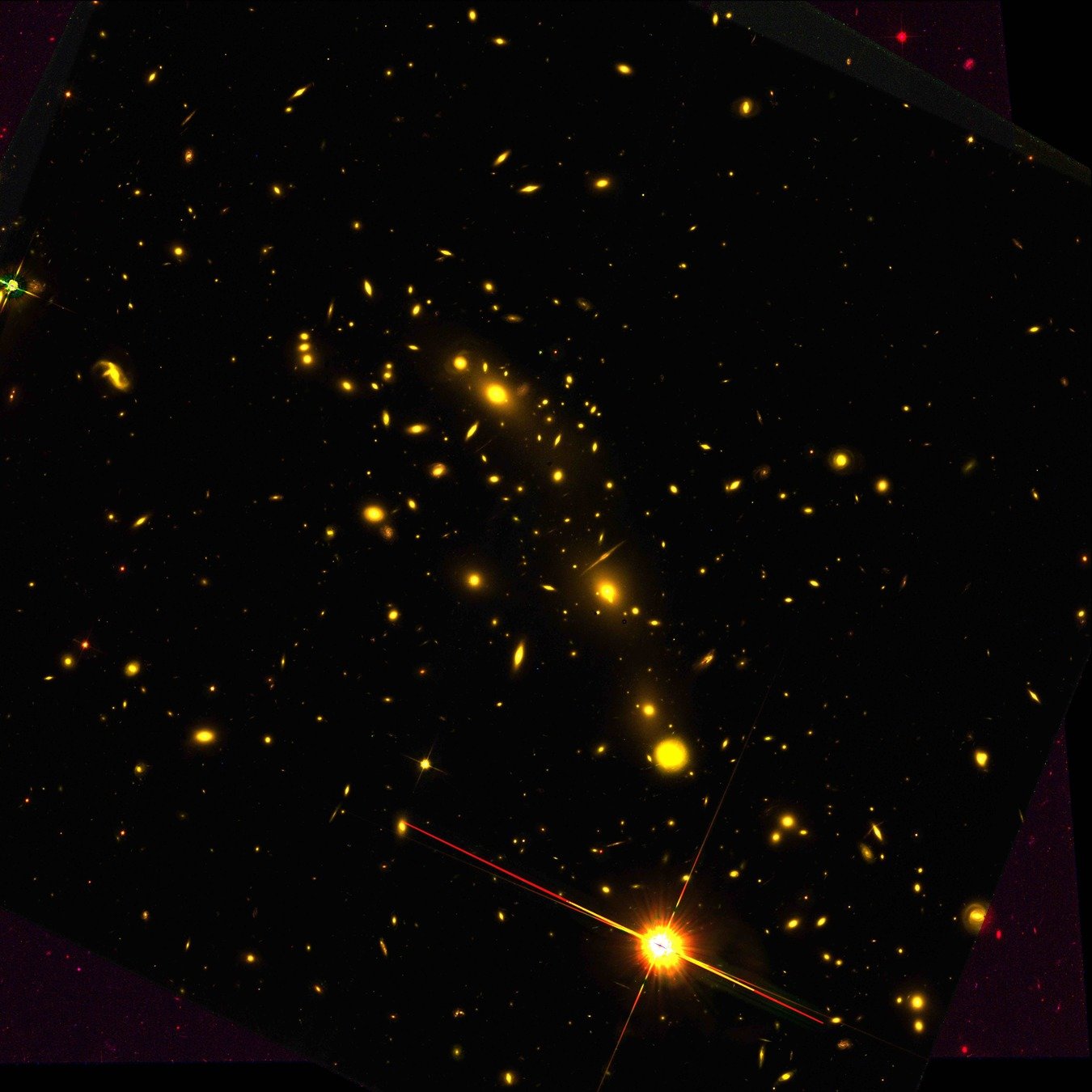

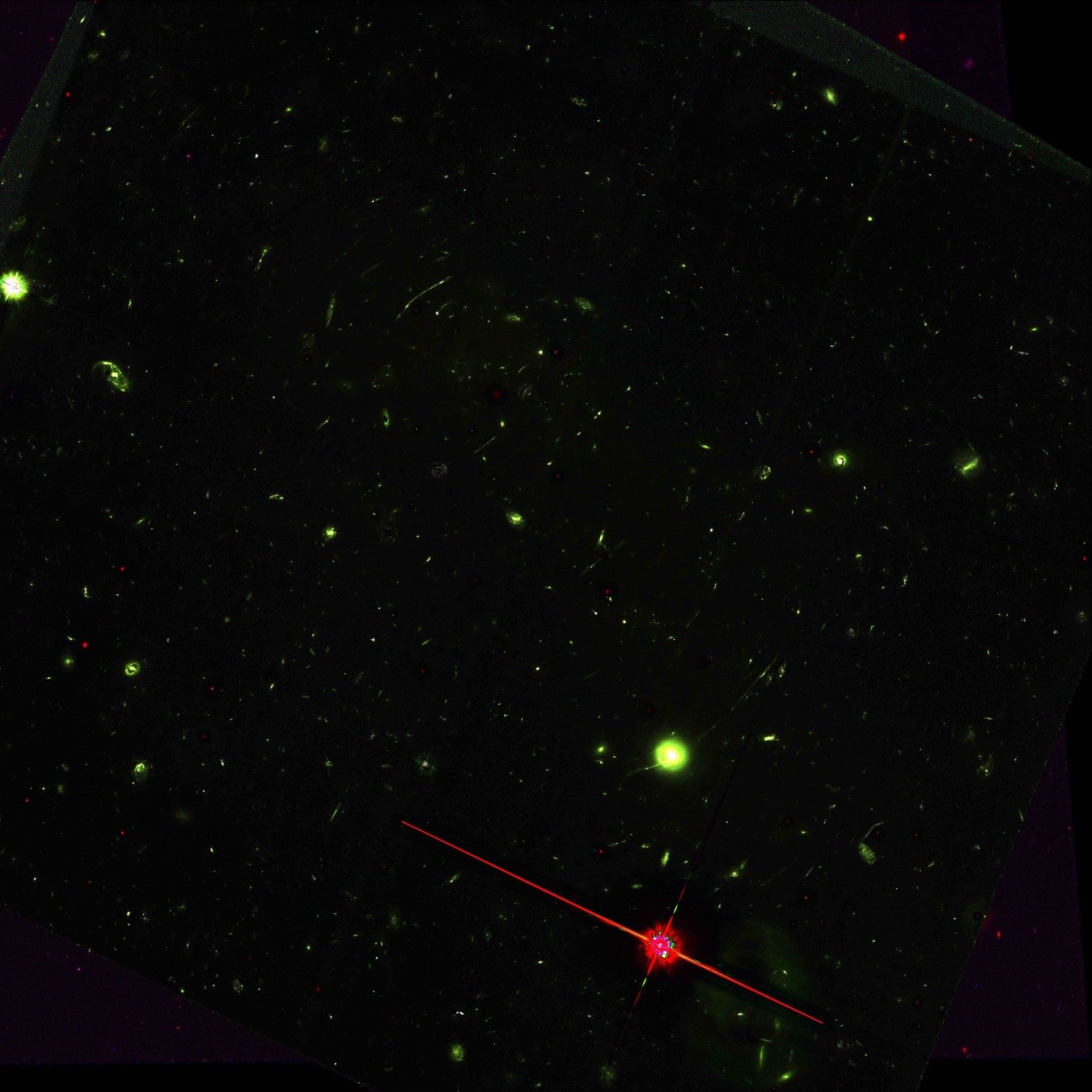
SCARLET
$$I_j = R*P_j * \sum_{i,n} a_{j,i,n}m_{i,n} +N_j$$
Melchior et al. 2016 ( arXiv:1802.10157)
- morphological assumptions as constraints:
- Positivity: All non-zero pixels must have positive values
- Monotonicity: Profiles smoothly decrease for the centre out.
-
Symmetry: Pixels about the central pixel take the value of the minimum of the two (Obsolete since Melchior, Joseph, Moolekamp 2019) - Bounding: Each galaxy profile is contained in a finite bounding box
Functional decompositions:
The Starlet transfrom
Illustration: Detection in crowded fields
Credit: Fred Moolekamp
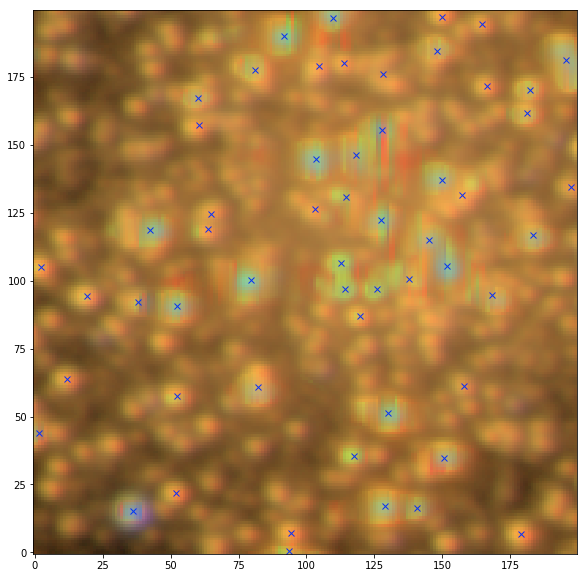
NGC 6569
Sep detection
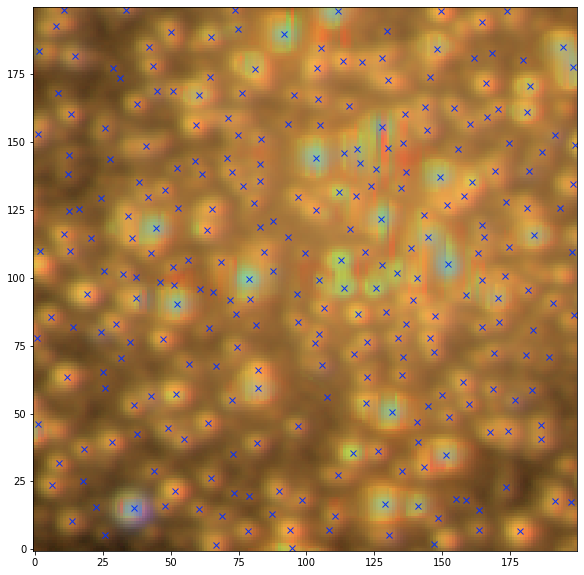
NGC 6569
Starlet+Sep detection
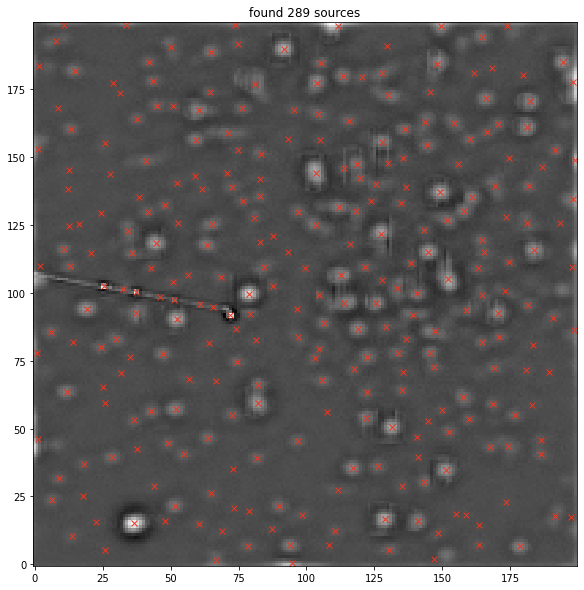
NGC 6569
Starlet level 1
$$I_j = R*P_j * \sum_{i,n} a_{j,i,n}m_{i,n}$$
PixelCNN as a prox
In scarlet
- Scarlet is flexible to the kind of constraints we can impose on morphology. We are now implementing priors PixelCNN Lanusse et al. 2019:

$$p(m) = \prod_k p(m_k|m_{k-1}, ..., s_0) $$
\( \tilde{M} = \underset{M}{argmin}\) \( \frac{1}{2}||I-HAM||^2_2 \) \(+\) \(\sum_i p(m_i)\)
ML SL
By herjy
ML SL
- 431


